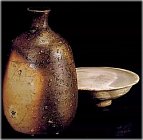|
SAKE STORES
Top Menu
United States
Singapore
What is
Premium Sake
Serving Tips 
Types of Sake
Parameters


|
|
|
 Premium sake is best enjoyed cool or chilled. We do not recommend warming premium sake, as this tends to mask or destroy various flavor characteristics of
the beverage. So please keep your sake in the refrigerator or in a cool, dark room. Premium sake is best enjoyed cool or chilled. We do not recommend warming premium sake, as this tends to mask or destroy various flavor characteristics of
the beverage. So please keep your sake in the refrigerator or in a cool, dark room.
- It is generally best to consume your sake soon after you purchase it. Although sake is sometimes aged, often with
wonderful results, most sake is best consumed within a few months after purchase.
- Once you open your bottle of sake, we suggest you enjoy the complete bottle within two or three hours, and if you have friends
over that's not too hard. If you simply can't finish it all, please store in your refrigerator and drink the remainder within the next two days. Premium sake, once opened, begins to oxidize, and
this noticeably impacts the taste.
- For more details, please visit the Etiquette page. It includes
instructions for those of you who want to experiment with sake at various temperatures, from warm to room to chilled.
 Pouring Etiquette Pouring Etiquette
With sake as with beer, pouring for others is a common custom in Japan that takes a bit of getting used to but has a wonderful charm and appeal once ingrained. Small cups (called ochoko or guinomi) and a larger serving flask or vessel (tokkuri) allow for frequent refill
opportunities, each of which is a mini-ritual of social bonding. In formal situations, the tokkuri is held with two hands when pouring. Likewise, the person receiving should lift his or her glass off the
table, holding it with one hand and supporting it with the other.
The more formal the situation the more such etiquette is observed. Even in informal situations, pouring sake for one's table
companions is the norm, although pouring and receiving parties generally revert to the more natural one-hand grip. Among close friends, after the first round or so, all pouring rituals are often
abandoned for convenience. Pouring for yourself is known as tejaku.
Your companions may feel an uncontrollable urge to refill your cup when it is empty. Resisting their entreaties for more is
generally futile, so the best approach is to allow your cup to be filled and then take tiny, tiny sips so that it never goes dry.
 
Happy Sake Sipping !!
|
|
|